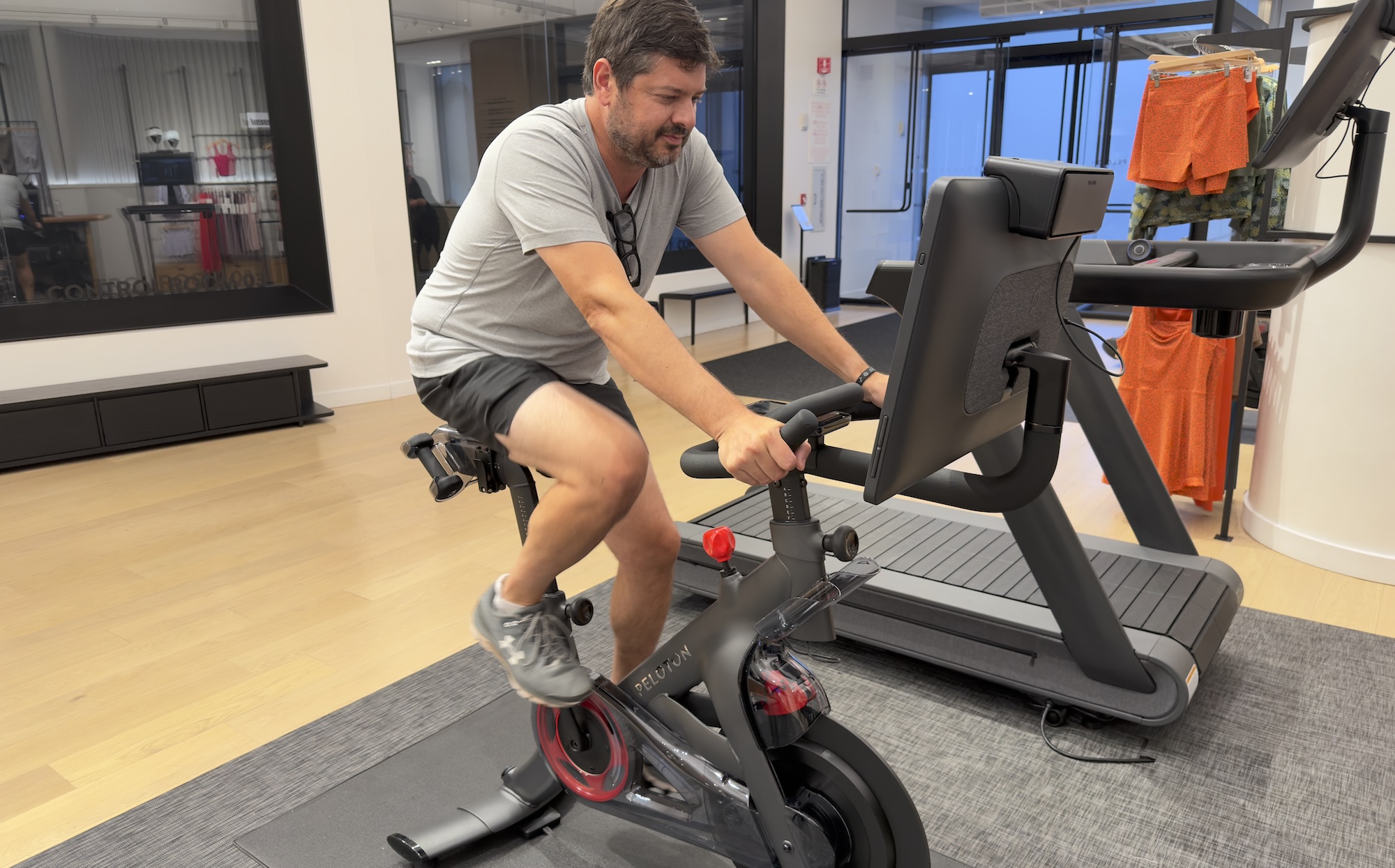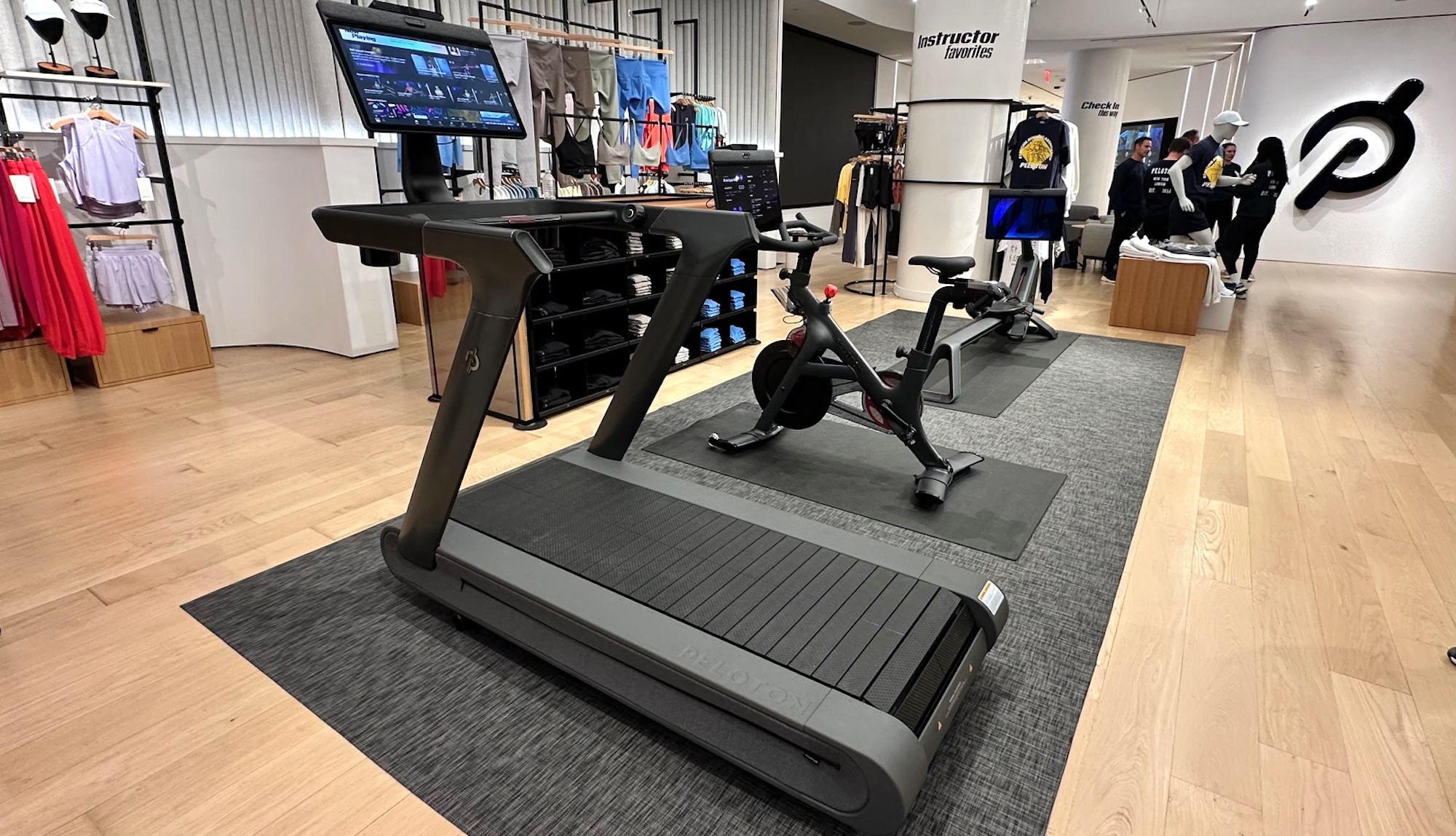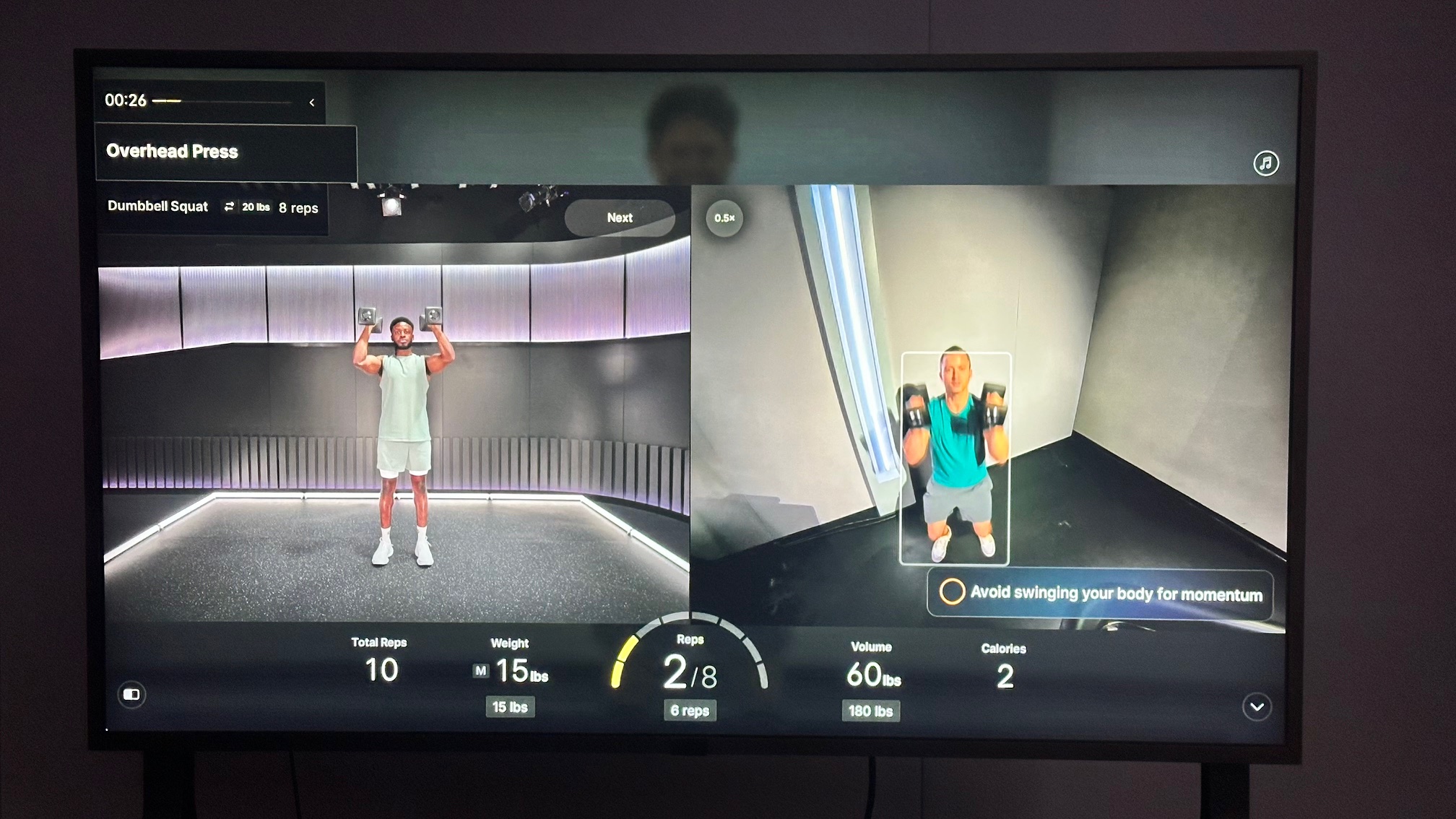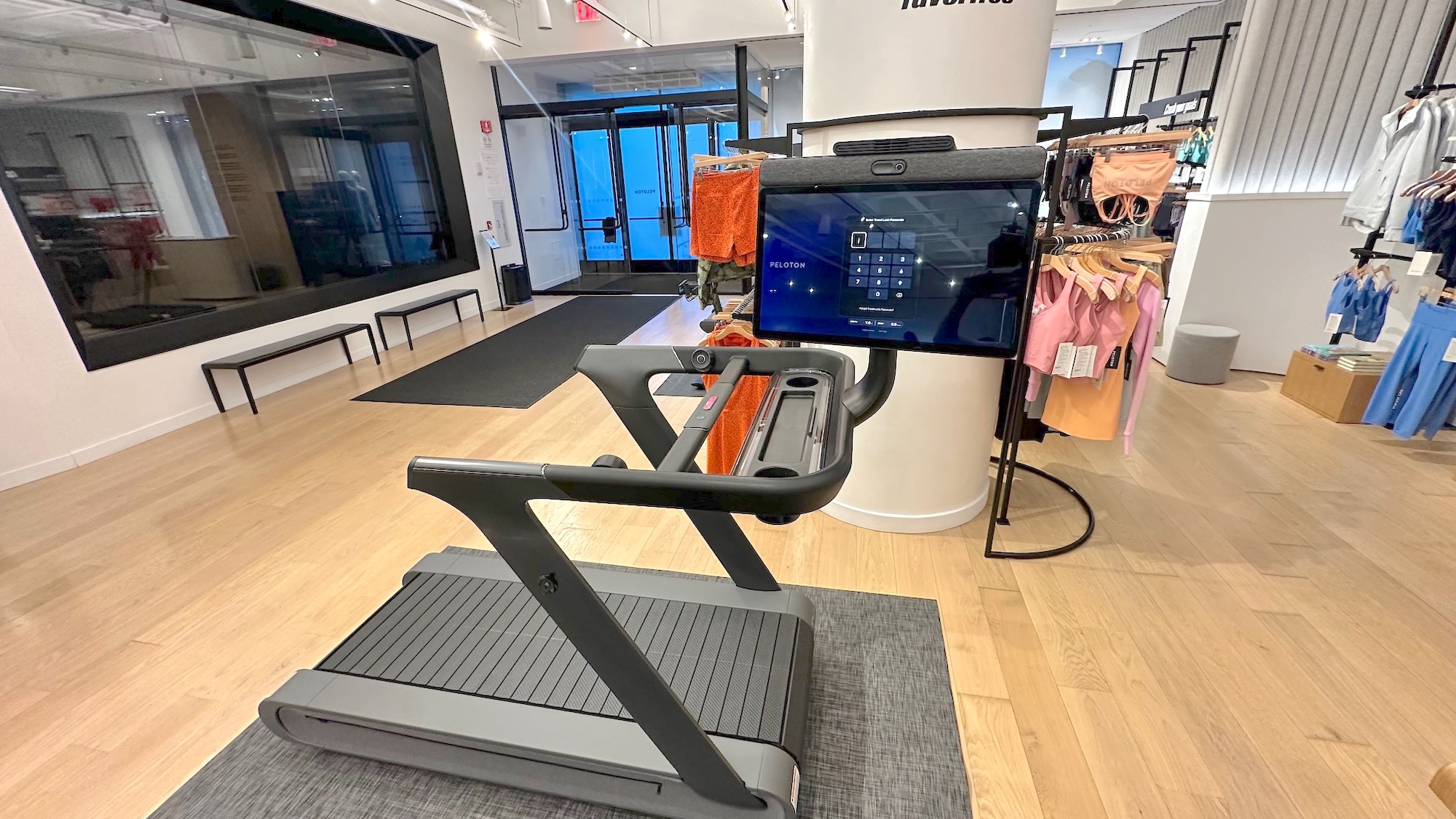I got sweaty with Peloton's new Bike and Tread — but Peloton IQ is just as impressive
Checking out Peloton's refreshed workout equipment

After what seems like ages, Peloton is giving all of its exercise equipment — treadmills, bikes, and rowing machines — a big makeover with better displays and niceties like built-in fans. But just as significant is the launch of Peloton IQ, a new feature that couples AI with cameras built into the devices to deliver a much more customized fitness regimen and provide live guidance as you're working up a sweat.
I got a chance to check out the new Peloton Tread+ and Bike+, as well as Peloton IQ; here are my initial impressions, as well as what I think are some pretty cool new things coming.
Peloton Tread+, Bike+, and Row+

| Row 0 - Cell 0 | Tread | Tread+ | Bike | Bike+ | Row+ |
Price | $3,295 | $6,695 | $1,695 | $2,695 | $3,495 |
Display | 21.5 inches | 23.8 inches | 21.5 inches | 23.8 inches | 23.8 inches |
Camera | No | Yes | No | Yes | Yes |
Voice control | No | Yes | No | Yes | Yes |
Size | 68” L x 33” W x 65” H | 75” L x 36.5” W x 70” H | 54" L x 23" W x 61" H | 54" L x 22" W x 60" H | 94” L x 24” W x 48" H |
Footprint | 59” L x 20” W belt | 67” L x 20” W belt | 4' x 2' | 4' x 2' | Row 6 - Cell 5 |
Weight | 286 lbs. | 460 lbs. | 135 lbs | 140 lbs | 155 lbs |
Peloton's treadmills, bikes, and rowing machines all look similar to their previous models, but with a notable difference: The displays on all three models can now rotate 360 degrees, making it easier to use them for off-device workouts.
There are a few differences between the regular and the Plus models. For starters, the base model displays are 21.5 inches, versus 23.8 inches on the premium models. While I don't have the specifics yet, the display on the Tread+ certainly appeared to have a higher resolution than the original Tread+.
You also get some other niceties when you pay up: On the Plus models, above each display is an improved speaker tuned by Sonos that will deliver a more powerful audio experience. Embedded in the middle of the speaker is a small camera on a swivel that's used by Peloton IQ to analyze your form as you exercise. And, as an extra bonus, a small fan sits atop the display to keep you cool as you work out.
Finally, all three Plus models will feature hands-free voice control, so you can say "Okay Peloton" to change the speed of the treadmill, look for different music tracks, and start and stop workouts.
The Bike, Bike+, Tread, and Row+ can be professionally installed in your house for $150; if you buy the Tread+, it'll run you $299. Having tested the previous version, you'll definitely want to spring for this service.
Get instant access to breaking news, the hottest reviews, great deals and helpful tips.
As with every model, you'll also need to sign up for a Peloton membership, which runs $49/month.
Peloton IQ

Peloton IQ uses AI to basically become your own personal coach. In the most simplest terms, it analyzes how well you do during your workouts, and then automatically tailors its recommendations based on the goals you want to hit.
In addition, it also takes into account your preferences for instructors and music when suggesting classes to take.
While Peloton IQ is available for all Peloton members, it's fair to say that those who have the most expensive gear — the devices with cameras built in — will get the most out of it.
In one demo that we watched, a representative followed along with a weightlifting exercise. On one half of the screen, the instructor went through the motions, while the second half of the screen showed a feed of the Tread+'s camera, with the rep following along.
The camera drew a white rectangle around the representative as he was exercising, and if his form was less than ideal, it would display a suggestion on the screen, as well as speak instructions on how to better perform the routine.
Weight Rack
For those into strength training, a feature called Weight Rack will track your reps and volume, and offer suggestions to increase or decrease the amount of weight you're lifting, or change the number of reps based on your goals and how you've been performing based on your form and other metrics.
Workout Generator
This feature lets Peloton members input things such as what muscles they want to work, experience level, and how much time they have, and Peloton IQ will then offer a workout tailored to those requirements. In addition, you can take any on-demand instructor-led strength class and modify it to suit your goals. While you'll no longer have the instructor giving you guidance, you will be presented with videos showing the proper form for each exercise.
Integration with Apple, Garmin, and Fitbit
If you have an Apple Watch, Garmin, or Fitbit device, you'll be able to sync your account with Peloton so that you can get credit for any workouts or activity you do away from the Peloton machines. While it won't be able to sync every metric — the best Garmin watches can get pretty into the weeds, especially with running stats — it will be able to link the major ones, such as pace and heart rate.
Outlook

As usual, Peloton's devices don't come cheap. The second-gen Tread+ is $700 more than the original, the Tread is $300 more, and the Bike+ is $200 more than the model it's replacing. Even before that, Peloton's gear was often the most expensive among the best exercise bikes and best treadmills.
Running on the new treadmill and cycling on the Bike felt just as good as on the older models; regardless of which you choose, I think the 360-degree rotating screen will be a real treat for those who need a bit more flexibility in where they do their workouts.
We're seeing AI pop up in all sorts of fitness gear, such as the Apple Watch's Workout Buddy, so it's no surprise that Peloton is also making it a feature in its new devices. We'll have to see how well Peloton IQ is at reading your vitals and tailoring your routine accordingly, but if it performs as advertised, it could make that pricey Peloton membership more of a value.

Michael A. Prospero is the U.S. Editor-in-Chief for Tom’s Guide. He oversees all evergreen content and oversees the Homes, Smart Home, and Fitness/Wearables categories for the site. In his spare time, he also tests out the latest drones, electric scooters, and smart home gadgets, such as video doorbells. Before his tenure at Tom's Guide, he was the Reviews Editor for Laptop Magazine, a reporter at Fast Company, the Times of Trenton, and, many eons back, an intern at George magazine. He received his undergraduate degree from Boston College, where he worked on the campus newspaper The Heights, and then attended the Columbia University school of Journalism. When he’s not testing out the latest running watch, electric scooter, or skiing or training for a marathon, he’s probably using the latest sous vide machine, smoker, or pizza oven, to the delight — or chagrin — of his family.
You must confirm your public display name before commenting
Please logout and then login again, you will then be prompted to enter your display name.
